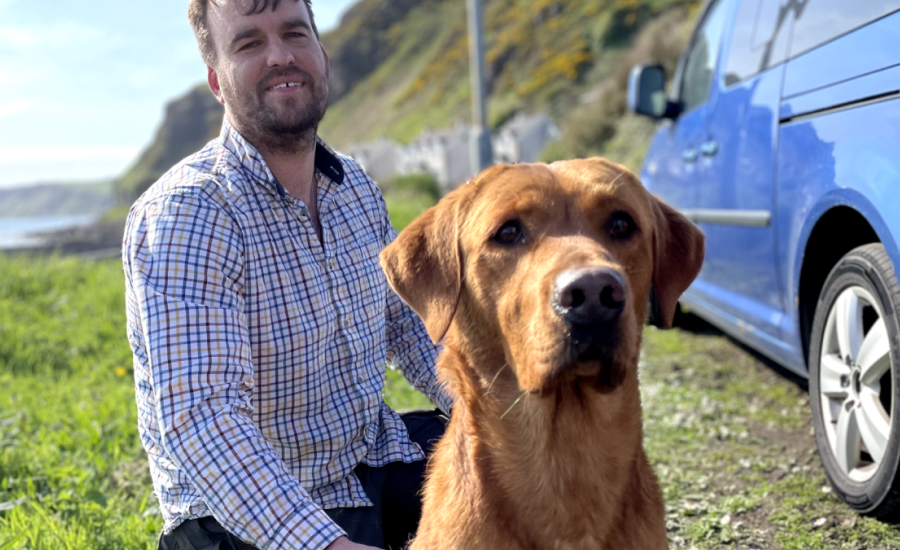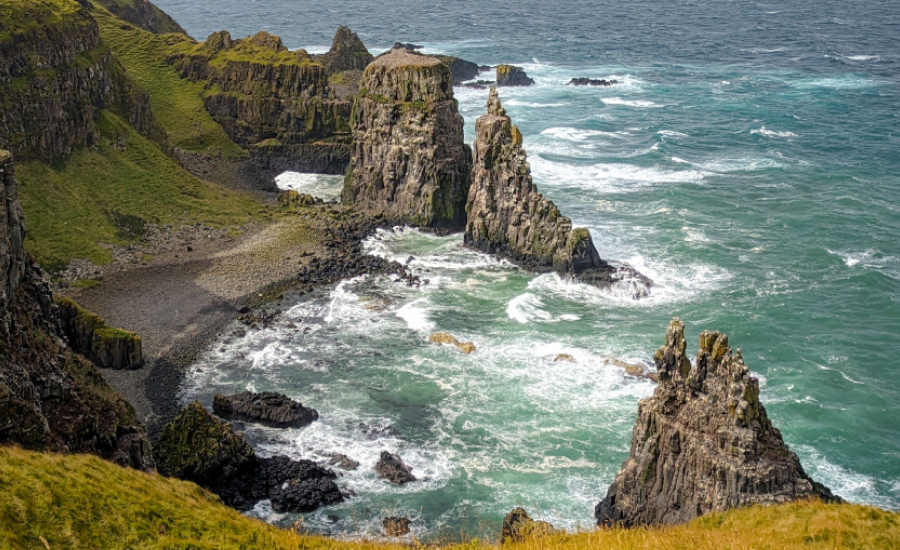The Evolutionary Genius of a Dog’s Nose Aids Rathlin LIFE Raft Project
Anna Feeny from the Rathlin Life Raft Project shares insights and updates on this important restoration project, as well as a new, furry addition leading the team.
In April 2024, the LIFE Raft project became one of the newest island restoration projects to join the Island-Ocean Connection Challenge, and since then they’ve welcomed some new recruits. First to arrive was Woody, the detection dog.
Woody meeting one of his handlers, Michael Rafferty
A two-year-old Fox Red Labrador nicknamed ‘The Unit’, Woody joined the team in May to help find any remaining feral ferrets on Rathlin Island, off the north coast of Northern Ireland. Both ferrets and brown rats are invasive non-native species on Rathlin, and over the years they have decimated internationally-important seabird populations. Last year, only one in three Puffin chicks (or ‘Pufflings’) survived long enough to fledge.
Puffins on Rathlin Island, Northern Ireland, UK. Photo: Viviana Biazzo
LIFE Raft, a project led by the Rathlin Development & Community Association (RDCA) and RSPB Northern Ireland (NI), is determined to restore Rathlin Island to a safe refuge for seabirds once again by removing invasive non-native ferrets and rats.
The team began removing feral ferrets in October 2023 and is steadily approaching a world first – the first ever feral ferret eradication.
That success, however, depends on leaving no stone unturned. Every potential sighting from the community has been followed up, and thermal drones and trail cameras are being deployed, but no technology can quite beat the evolutionary genius of a dog’s nose.
Kebble Seastacks, Rathlin Island, Northern Ireland, UK. Photo: Viviana Biazzo
After his summer spent as a conservation hero, Woody will likely be retrained to tackle the next threat: brown rats. This second invasive non-native species found their way to the island in the 1800s, and they, like the feral ferrets, have found ground-nesting birds to be easy prey.
The team has recently welcomed 11 new field assistants and is recruiting a further dozen residential volunteers to aid in invasive rat removal come September. This will be the final mammoth effort to make Rathlin a safe place for native plants and animals to thrive. It is possible that in just a few short years Rathlin Island will once again be a seabird haven.
“The success of this project will mean that the wildlife of Rathlin, the sights and sounds that we grew up with, can continue. The seabirds and ground-nesting birds are a big part of our natural heritage as well as being a major draw to the island for tourists during the spring and summer months. By protecting them we are making sure that our island community plays a part in protecting this shared heritage for future generations.”
-Michael Cecil, Chair of the Rathlin Development Community Association
Kittiwake and chicks nesting on cliffs on Rathlin Island, Northern Ireland, UK. Photo: Viviana-Biazzo





